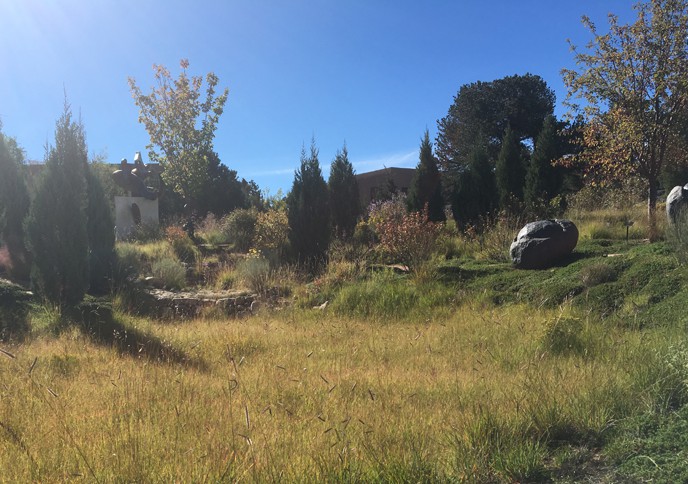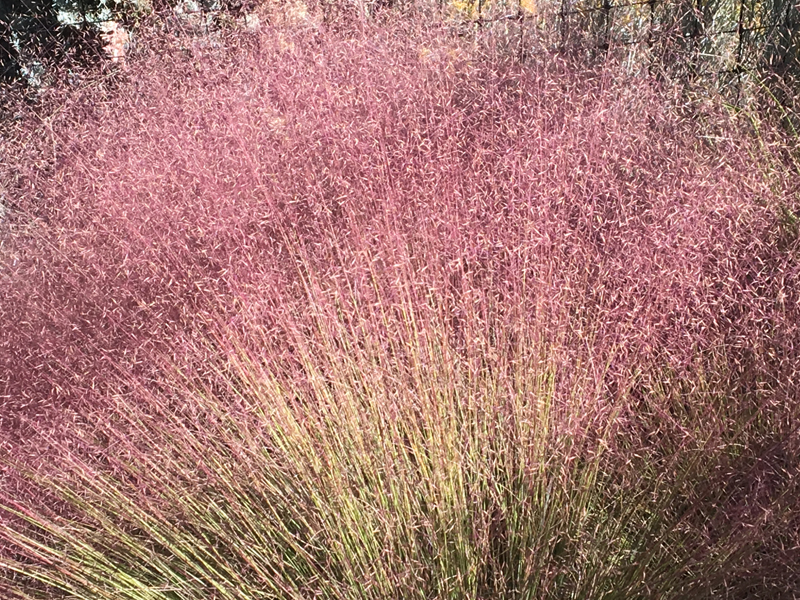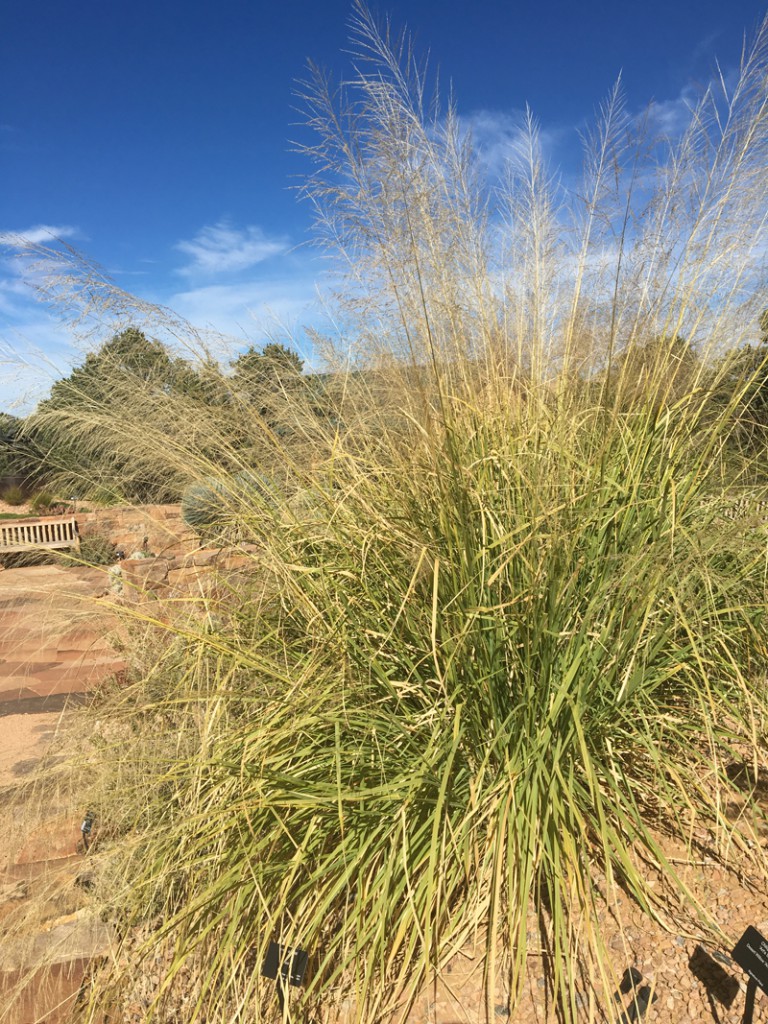October 5, 2016
by Joan Grabel
The grasses are in their flowering glory and what could be more complimentary to Bill Barretts’ Visual Poetry sculpture. The fall wind moves through the flowering grasses creating a sweet rhythmic motion as seen in the blue grama (Bouteloua gracilis), with its’ seed heads swaying poetically on top of thin blades, calls us to visually embrace the moment because tomorrow it will not be the same. In mass it creates quite a choral chant. Only 4 to 18 inches tall, it can be used as a lawn substitute or in a meadow. This native is the official state grass of New Mexico.

Meadow Garden with blue grama (photo: Joan Grabel)
In contrast to the blue grama is the orange/reddish brown fall color of the little bluestem (Schizachyrium scoparium ‘The Blues’). Reaching 3 to 4 feet high, it would make a wonderful backdrop for the blue grama. Little bluestem could be in a raised bed with the blue grama on a lower level covering a large area.
Triangulating three little bluestem and repeating this in the border would also make a statement.
For a cottage look this grass can be grouped with smaller shrubs and ground covers.

Little bluestem (Schizachyrium scoparium ‘The Blues’) grows throughout the Orchard borders. (photo: Joan Grabel)
Taller is the ‘Shenandoah’ switchgrass (Panicum virgatum ‘Shenandoah’) reaching to 4+ feet high with its reddish pink flowers on dark green blades is stunning in mass or used as an accent. ‘Shenandoah’ would make a harmonious color composition with the 2 to 3 foot tall ‘Autumn Embers’ muhly grass. The reddish pink blooms of ‘Autumn Embers’ looks like a cloud of cotton candy presenting an ethereal glow. For a contemporary style, group with the switch grass in the back with 4 to 5 ‘Autumn Embers’ close to each other in front and repeat the pattern as long as the border size permits.

‘Shenandoah’ switch grass (photo: Joan Grabel)

‘Autumn Embers’ muhly grass (photo: Joan Grabel)
Even larger is the native giant sacaton (Sporobolus wrightii) with golden seed heads reaching 5 to 7 feet tall by 3 to 5 feet wide. This ornamental grass makes for an attention grabber accent in the garden. If you have a stucco wall, at least 25 feet long, this grass can be placed alone, 10 feet on center, creating a rhythmic pattern and surrounded by pebbles. Also it could be placed on either side of a large gate announcing an entrance or passage.

Giant sacaton (Sporobolus wrightii) in the xeric gardens (photo: Joan Grabel)
Early spring is recommended for cutting the grasses down. Check for that information so you keep your grasses looking their best. The grasses go through a color metamorphis that can be appreciated throughout different seasons. There are times when they are not so noticeable, however this is the time of year that they call our attention and show us their splendor!
Joan Grabel Biography
Joan Grabel is a landscape designer in Santa Fe, NM and Los Angeles, California


